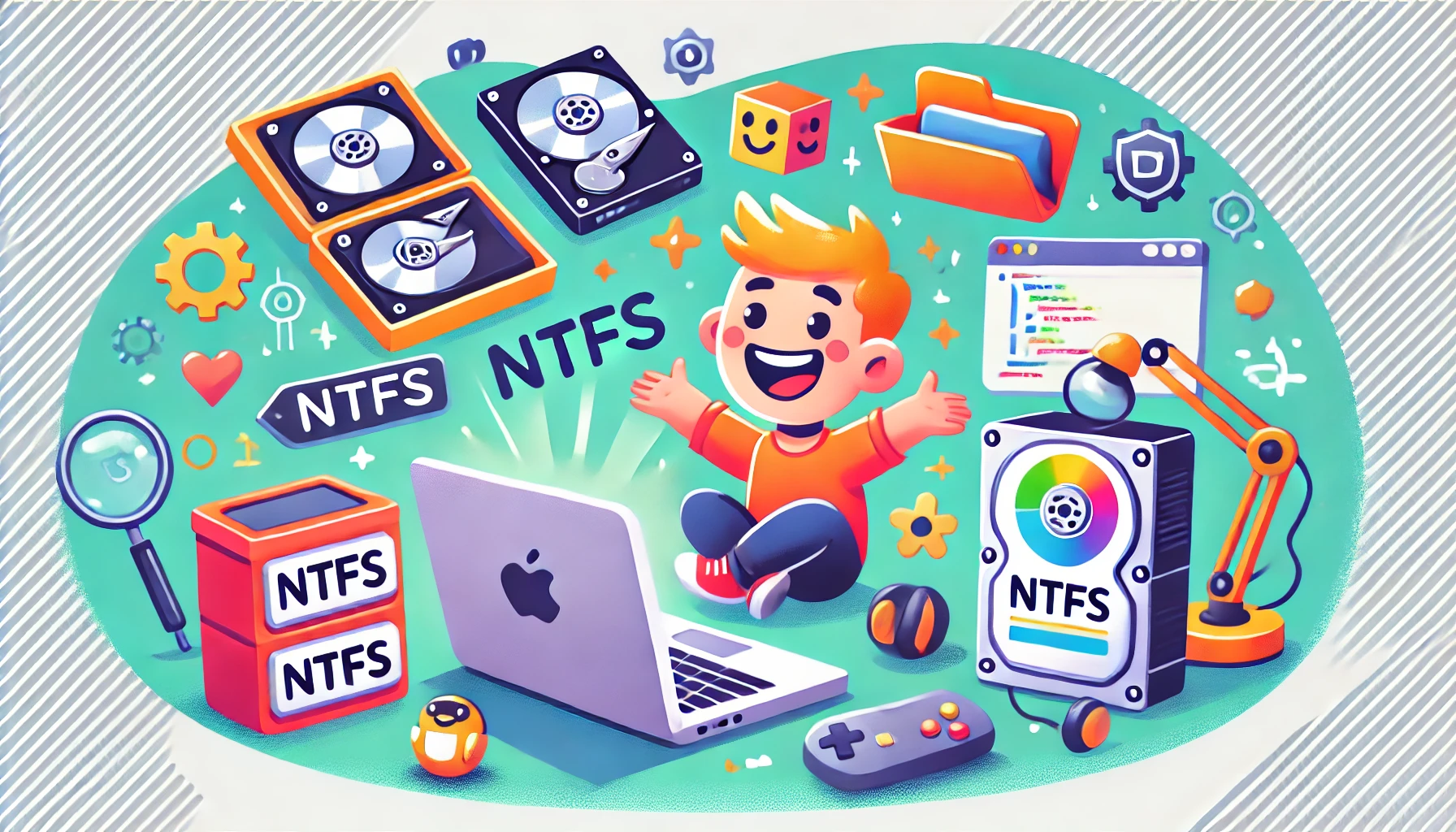
By Atharva Joshi
📆 Posted on 2024-11-16T00:00:00.000Z
🎉 Automate NTFS Drive Management on macOS Like a Pro! 🚀
Table of Contents
- Introduction: Why NTFS Drives and macOS Need a Love Story 💔
- Our Mission: Automate Everything! 🤖
- Pre-requisites: Tools of the Trade 🛠️
- The Python Script: Your Loyal Sidekick 🐍
- Automation with
launchd: Magic on Insert ✨ - Testing and Enjoying the Setup 🎉
- Final Words of Wisdom 🧙
Introduction: Why NTFS Drives and macOS Need a Love Story 💔
macOS users, raise your hand if you’ve been frustrated trying to write to an NTFS drive 🙋. You plug in your external drive, only to realize you’re in a read-only relationship with it. It’s like having a car but only being allowed to admire it from afar. 🚗✨
But fear not! Today, we’re fixing this, and we’ll make the process not just functional but fun! 🥳
Our Mission: Automate Everything! 🤖
We’ll:
- Automatically detect NTFS drives.
- Mount them with full read/write capabilities.
- Let you create, edit, delete, and manage files/folders like a boss! 💼
All while sipping coffee. ☕ Let’s dive in!
Pre-requisites: Tools of the Trade 🛠️
-
Install Homebrew 🍺:
/bin/bash -c "$(curl -fsSL https://raw.githubusercontent.com/Homebrew/install/HEAD/install.sh)" -
Get
ntfs-3g🚀:brew install ntfs-3g -
Python (v3.x)` 🐍:
- Already on macOS? perfect. If not, install it:
brew install python3The Python Script: Your Loyal Sidekick 🐍
Here’s the hero of our story. Copy-paste the script below into a file called ntfs_manager.py
import os
import subprocess
import time
NTFS_MOUNT_BASE = "/Volumes/NTFSDrive" # Base folder for mounting NTFS drives
def get_ntfs_drives():
"""Detect NTFS drives connected to the system."""
print("Checking for NTFS drives...")
result = subprocess.run(["diskutil", "list"], stdout=subprocess.PIPE, text=True)
drives = []
for line in result.stdout.splitlines():
if "Microsoft Basic Data" in line: # NTFS drives often show as "Microsoft Basic Data"
parts = line.split()
if len(parts) > 0:
drives.append(parts[5]) # The disk identifier
return drives
def mount_ntfs(drive):
"""Mount an NTFS drive with write access."""
mount_point = f"{NTFS_MOUNT_BASE}/{drive.replace('/', '-')}"
os.makedirs(mount_point, exist_ok=True)
print(f"Mounting NTFS drive {drive} at {mount_point}...")
command = f"sudo ntfs-3g /dev/{drive} {mount_point} -o rw,auto,nobrowse"
result = subprocess.run(command.split(), stdout=subprocess.PIPE, stderr=subprocess.PIPE, text=True)
if result.returncode == 0:
print(f"Drive {drive} mounted successfully at {mount_point}.")
else:
print(f"Error mounting drive {drive}: {result.stderr}")
def monitor_drives():
"""Continuously monitor for new NTFS drives."""
print("Starting NTFS drive monitor...")
already_mounted = set()
while True:
current_drives = set(get_ntfs_drives())
new_drives = current_drives - already_mounted
for drive in new_drives:
mount_ntfs(drive)
already_mounted.update(new_drives)
time.sleep(5) # Check for new drives every 5 seconds
if __name__ == "__main__":
monitor_drives()Save and secure it like treasure! 💎
Automation with launchd: Magic on Insert ✨
Let’s make this script run automatically when an NTFS drive is inserted.
- Create a launchd plist File 📝
Save this file as com.user.ntfsmonitor.plist in ~/Library/LaunchAgents/:
<?xml version="1.0" encoding="UTF-8"?>
<plist version="1.0">
<dict>
<key>Label</key>
<string>com.user.ntfsmonitor</string>
<key>ProgramArguments</key>
<array>
<string>/usr/bin/python3</string>
<string>/path/to/ntfs_manager.py</string>
</array>
<key>RunAtLoad</key>
<true/>
<key>KeepAlive</key>
<true/>
<key>WatchPaths</key>
<array>
<string>/Volumes</string>
</array>
</dict>
</plist>Replace /path/to/ntfs_manager.py with the full path to your script.
- Load the Daemon 🚀
Activate it with:
launchctl load ~/Library/LaunchAgents/com.user.ntfsmonitor.plistTesting and Enjoying the Setup 🎉
-
Insert an NTFS drive.
-
Watch the magic! The drive will be mounted automatically. 🧙♂️
-
Navigate to /Volumes/NTFSDrive/ to start creating/editing files and folders. 📁
Final Words of Wisdom 🧙
Congratulations! You’ve:
- Befriended NTFS on macOS.
- Automated the entire process.
- Made tech look easy while staying awesome. 😎
Share this tutorial with your friends, and let’s help the world embrace automation! 🌍
“Tech is not just tools; it’s how we solve everyday frustrations with a sprinkle of humor.” 😂
Happy Automating! 🚀